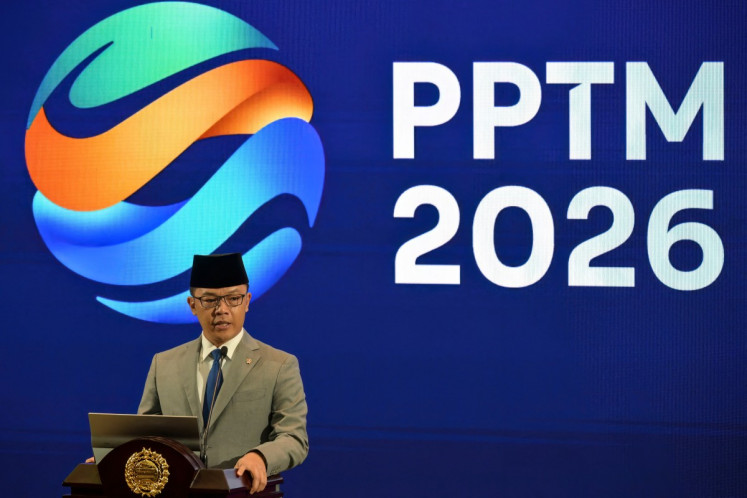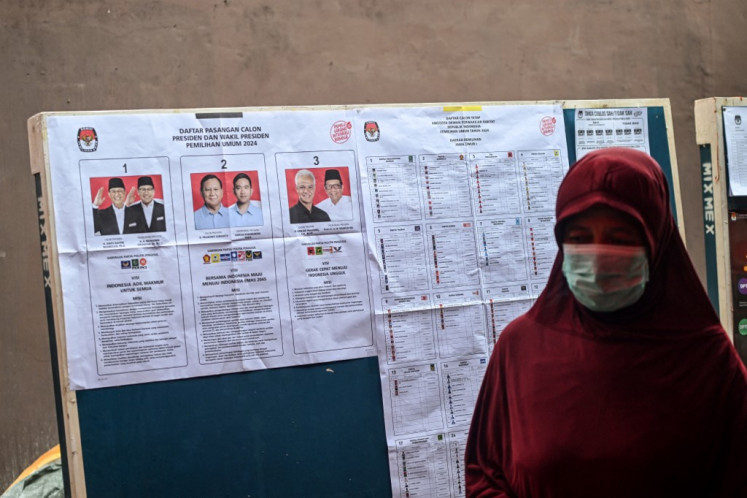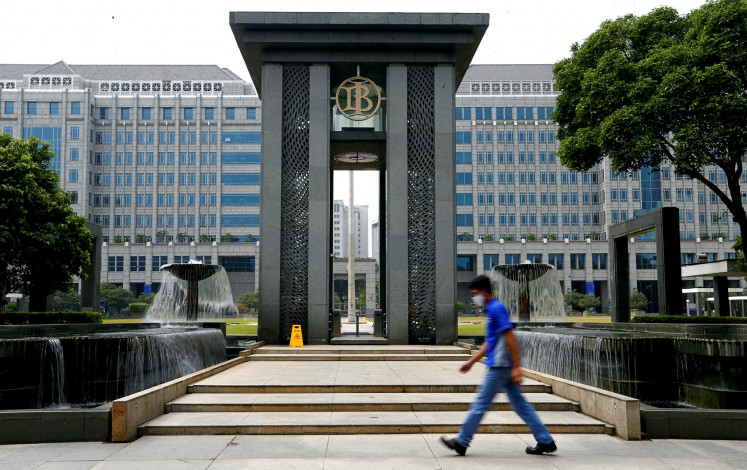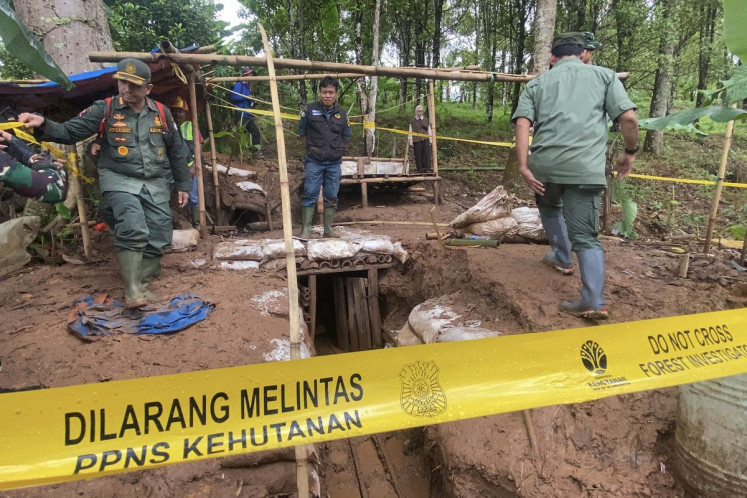Popular Reads
Top Results
Can't find what you're looking for?
View all search resultsPopular Reads
Top Results
Can't find what you're looking for?
View all search resultsEmpowering Southeast Asia’s solar surge: Turning hype into reality
Renewable energy regulations evolve quickly, often struggling to balance between the short-term needs of stakeholders and long-term aspirations for sustainable growth.
Change text size
Gift Premium Articles
to Anyone
S
outheast Asia stands on the brink of a solar energy revolution, with policymakers across the region looking to accelerate the green transition and deliver on ambitious net-zero targets. Pioneering countries like Singapore, Vietnam and the Philippines have all taken proactive steps toward this greener future, embracing cutting-edge solar technologies such as rooftop solar systems, utility-scale solar power plants and floating solar.
As a result, installed solar power capacity in Southeast Asia more than doubled from 10.4 Gigawatt to 22.9 GW between 2019 and 2020, according to the International Renewable Energy Agency (IRENA). Going forward, the ASEAN Centre for Energy (ACE) forecasts that solar will see the highest generation capacity growth rate among renewable energy sources well into 2040.
While these figures point to a promising future for solar, the region’s renewable energy demand and transition ambitions are quickly outpacing its current development trajectory.
Take Indonesia as an example. Despite being a tropical archipelago with year-round sunshine, projections made by the Institute for Essential Service Reform (IESR) showed that as of end-2021, solar energy only comprises less than 0.1 percent of Indonesia’s total energy mix. This then begs the question, what steps need to be taken to turn hype into reality?
In my view, three lingering challenges stand in the way of unlocking the full potential of Southeast Asia's solar market: Facilitating greater capital flows into regional solar infrastructure, increasing access to insurance coverage, and rethinking supply chains in favor of resilience and cost efficiency.
The persistent funding gap facing Southeast Asia’s green transition has been well-documented over the years. IRENA recently estimated that an average annual investment of US$210 billion to 2050 would be needed for ASEAN to align with pathway targets limiting global warming to 1.5 degrees Celsius – more than two and a half times the amount currently earmarked by regional governments. While more investors are entering this market to bridge the gap, tangible headwinds remain.
Renewable energy regulations evolve quickly, often struggling to balance between the short-term needs of stakeholders and long-term aspirations for sustainable growth. In Indonesia, rooftop solar deployment growth stalled in 2022 due to a 10 to 15 percent capacity limitation imposed following overcapacity concerns.
The latest revision to Energy and Mineral Resources Minister Regulation No. 26/2021 on Rooftop Solar Systems was meant to address this, with a proposed switch to a first-come-first-serve quota system. However, there are still concerns voiced by industry players like the Indonesian Solar Energy Association (AESI), pointing to ambiguity in how the quota is defined.
Beyond the many attempts at enacting a reliable rooftop solar deployment framework, local content requirements – which require solar PV modules to be made using 60 percent of domestic products – are also widely seen to impede investments, especially as the efficiency and price of domestic solar panels do not align with international lender procurement rules.
These, alongside the reluctance to wean the country off fossil fuels, widely-held perceptions of higher costs for renewable energy infrastructure, and inflexible offtake contracts that often fall short of international standards, are all hindering Indonesia’s energy transition.
Investors need a clear view of the regulatory and policy landscape to make informed decisions. Southeast Asia’s track record on this front has been mixed, but recent developments like Presidential Regulation No. 112/2022 in Indonesia could mean more competitive solar power purchase pricing. The launch of the Just Energy Transition Partnership (JTEP) at the Group of 20 Summit in Bali last year also signals that clarity on a coordinated long-term roadmap is finally on the horizon.
While investment dollars tend to capture headlines, the insurability of renewable energy projects is often underappreciated in de-risking the green transition and catalyzing the additional capital flows to reach regional climate goals. Southeast Asia's susceptibility to natural catastrophes poses significant physical risks for renewable energy projects.
As the number of new infrastructure developments and severe natural disasters increase concurrently, the strain on the insurance market will become more apparent. As a result, insurers are expected to tighten capacity for natural catastrophes and risk coverage in the coming years.
Beyond this, traditional insurance solutions often fail to cover financial losses resulting from unfavorable weather conditions affecting energy generation output. This is an important consideration when assessing a renewable energy asset’s potential revenue stream and resulting credit risk.
Indeed, the vulnerability of these cashflows to sub-optimal environmental inputs can “make-or-break” a project’s long-term viability if improperly managed. Without proof of physical loss or damage, businesses have largely had to absorb this risk alone.
Weather parametric-based solutions could address both insurability challenges. Pay-outs for these insurance offerings are triggered by the value of an index, such as those modelling energy outputs or the probability of a certain pre-defined event happening. We are already seeing lenders add parametric insurance to loan terms in a few ASEAN markets; this will become an increasingly important lever in mitigating the risks and supporting the bankability of renewable projects.
From our conversations with energy leaders worldwide, supply chain risks are a leading concern for their operating businesses and the continued viability of the green transition. Project times are lengthening and costs are spiraling as companies compete to get raw materials and equipment, putting future transition plans at risk.
Likewise, ASEAN member states have also begun recognizing that energy security and independence will depend on the resilience of renewable supply chains – both upstream and downstream.
However, current and future capacity for many critical inputs are geographically concentrated, with China dominating over 80 percent of all critical manufacturing stages for solar panels. Southeast Asia, in contrast, holds only a modest share of the global solar supply chain. For example, according to the IESR, Indonesia’s photovoltaic manufacturing is currently only limited to module assembly, with a total annual production capacity of 1,644-megawatt peak (MWp) from 21 manufacturers.
As regional governments work toward greater energy security and corporate push to optimize their supply chains worldwide, the region can capitalize on its manufacturing capabilities and access to primary mineral resources to enhance its production foothold. The notion is not as farfetched as you might think.
To elevate the region’s status to solar supply chain powerhouse, international and regional cooperation will be key. An important part of this process, where we see significant interest brewing, is getting a better understanding of the current state of supply chains. These can be through diagnostic mapping, data analytics, and monitoring tools to empower decision-making and communication between suppliers, manufacturers, and end users.
Southeast Asia has the potential to become a global leader in solar energy. Realizing this potential, however, requires a serious examination of lingering challenges. Governments and industry stakeholders must continue to work together to find a way forward in these areas.
If done correctly, the long-term benefits to the region will be immense, offering new avenues for jobs, skill development, investment, and economic growth. Get it wrong, we could miss a once-in-a-lifetime opportunity to secure its sustainable future.
***
The writer is director for renewable energy, corporate risk and broking in Asia at WTW.










